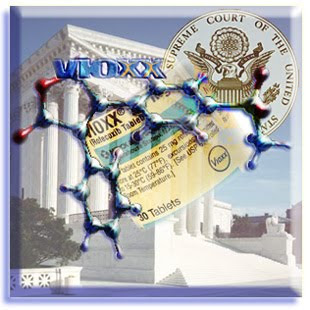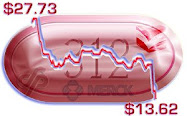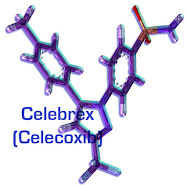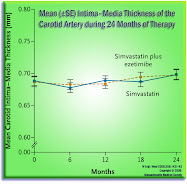Lately, Schering-Plough's SEC filings have recited that "stock options granted on or after January 1, 2008" -- will not automatically vest on a Change of Control. That will be true for most pigs -- but CEO Fred Hassan is unlike most pigs. . . .
That is, it may be true as to other executives, but CEO Hassan negotiated "special grandfathering" of stock options, and other forms of equity compensation, for himself, and himself alone, in the event of a Change of Control, back in 2003, when he signed on -- here's his full employment agreement (the below is from Section 3(j) -- on page 4):
 . . . .(j) DURING CHANGE OF CONTROL PERIOD
. . . .(j) DURING CHANGE OF CONTROL PERIOD
Without limiting the generality of the foregoing, during a Change of Control Period, the incentive, savings and retirement benefit opportunities (measured with respect to both regular and special incentive opportunities, to the extent, if any, that such distinction is applicable) and the other benefits provided to the Executive pursuant to Sections 3(d), (e), (f), (g), (h) and (i) shall in no event be less than the most favorable such opportunities and benefits provided to the Executive by the Company and its affiliates at any time during the 120-day period immediately preceding the Change of Control Date. In addition, notwithstanding anything herein or in the 2002 Plan to the contrary, upon the Change of Control Date, the Shares and the Options shall immediately vest in full, and the Options shall remain exercisable for the remainder of their stated term. . . .
That last bit
nullifies any later action taken by the Board or Compensation Committee to limit the immediate, and full-vesting -- should a Change of Control occur, at least as to CEO Hassan.
And should the Merck transaction close, that is exactly what Fred Hassan will say: all options -- including those granted on May 1, 2009 -- even after the announcement of the proposed merger -- must vest in full as to Hassan, and Hassan alone.
Some pigs are, indeed, "
more equal". Let's try to total it up, then:
Tonight's
Wall Street Journal story correctly pegs his immediate cash portions at $17.7 million, plus pension benefits of $13.2 million, and medical benefits of $130,750 (just this year), or about $31 million.
But that's just small potatoes, compared to the equity portions: Mr. Hassan has various option grants of 1,100,000 shares (at $18.20), 220,000 shares (at $20.70), 880,000 shares (at $20.70), 200,000 shares (at $19.23), 800,000 shares (at $19.23), 167,200 shares (at $18.85), 668,800 shares (at $18.85) and 868,300 shares (at $22.91). So, all of these are exercisable at various prices between $18.20 and $22.91 per share. [I have dropped from the tally, the options that aren't likely to be in the money: they are 236,000 shares, and 944,000 shares, each exercisable at $31.57 -- but
do not forget about these, if by some miracle, Schering-Plough trades into the $31.60 range by merger time.]

Don't forget -- he has his 900,000 share option mega-grant from early 2004 -- exercisable at $17.34.
He
also has the 2003-era 200,000 deferred stock units, and the February 27, 2009 deferred stock unit grant of 195,610 shares -- free and clear. [So the jet just got gilded!]
Finally -- he has his "
all other performance based" stock units covering 672,714 shares -- if just the target amounts are paid out in 2009, and early 2010. Now, to calculate -- [I advise making an EXCEL spreadsheet!] on the options, it is simply a matter of subtracting assumed NYSE market prices, from exercise prices -- and multiplying by numbers of shares -- to reach his potential gain, at any given NYSE quoted stock price. Similarly, on outright share-grants, one multiplies the full NYSE stock price, times the total number of shares -- all of those share-gains are his to keep. Simple -- and simply dizzying -- given the size of the numbers, and the endless parade of serial grants.
So, tallying up just the
incremental effects -- CEO Hassan's ultimate pay-out will
rise by over
$7.74 million -- for every dollar over $22.91 that Schering-Plough's common stock rises, in NYSE trading, as of the reverse-merger date (click image to enlarge -- as if you'd
need to!):
 By my reckoning, if the merger were to close tonight, at $23.68 -- Schering-Plough's NYSE closing common stock quote -- Mr. Hassan would walk away with a grand total of $139.96 million
By my reckoning, if the merger were to close tonight, at $23.68 -- Schering-Plough's NYSE closing common stock quote -- Mr. Hassan would walk away with a grand total of $139.96 million. The NYSE stock price is likely to be
closer to $26.25, when the merger occurs -- as that is nearer the March 9, 2009 pegged value -- and, in that case,
his personal take-away would be a jaw-slacking $159.85 million.
Now, on
top of all of this, remember, the company must pay his taxes -- must gross him up -- should he be hit with any so-called IRS Section 280G "
excessive (non-performance based) compensation" taxes. I cannot accurately model the size of that gross-up, in any detail -- but it could add an additional 30 percent to his all-in expense to the company. If the tax gross-up clauses were to be triggered, his compensation costs would likely be
north of $200 million (as the company accrues and pays the compensation -- and the taxes on it).
Astonishing, no? I think so.
~~~~~~~~~~~~~~~~~~UPDATED -- 05.22.09 @ 12:20 PM EDT: Jim Edwards, over at BNet-Pharma
has linked this (
Thanks, Jim!), and done some calculations of his own. He has
left off all the option shares CEO Hassan received on May 1, 2009, and February 27, 2009. He also is valuing the options at $18.85 -- which puts many of them
underwater.
Worthless, actually. Schering-Plough hasn't traded below $21.60 since the first few days after the proposed merger announcement, on March 9, 2009. Today, it is at $23.70. So, on balance, though I respect Jim a lot -- I think my
estimated payout is in the range (call it $140 million -- to $160 million) of the most-likely ones -- unless the entire reverse-merger with Merck is to be subsequently renegotiated. Neither of us tried to estimate the IRS Section 280G tax gross-up amounts.


 Because Schering-Plough has chosen to speak about these presumably material matters, it would be fair to ask whether Schering-Plough's view is that there is nothing material to report about monthly IMS 'scrip data on the Cholesterol Franchise Joint Venture, Vytorin and Zetia. For
Because Schering-Plough has chosen to speak about these presumably material matters, it would be fair to ask whether Schering-Plough's view is that there is nothing material to report about monthly IMS 'scrip data on the Cholesterol Franchise Joint Venture, Vytorin and Zetia. For 






 Q: What is the status of the SAPHRIS (asenapine) regulatory application in the U.S.? When do you plan to file in Europe?
Q: What is the status of the SAPHRIS (asenapine) regulatory application in the U.S.? When do you plan to file in Europe? . . . . In an arbitration demand filed today with the American Arbitration Association, Johnson & Johnson has requested a ruling that the agreement and plan of merger between Merck & Co., Inc., and Schering-Plough Corporation constitutes a change of control that would permit the termination of the agreements between Schering-Plough and Johnson & Johnson’s subsidiary Centocor Ortho Biotech Inc., regarding the product REMICADE® (infliximab), a well-established biologic product for inflammatory/immunological diseases, and SIMPONI™ (golimumab), a next-generation treatment. The termination of the agreements would return full rights to Johnson & Johnson for the distribution of these products in markets outside the United States where Schering-Plough currently has the rights to distribute these products.
. . . . In an arbitration demand filed today with the American Arbitration Association, Johnson & Johnson has requested a ruling that the agreement and plan of merger between Merck & Co., Inc., and Schering-Plough Corporation constitutes a change of control that would permit the termination of the agreements between Schering-Plough and Johnson & Johnson’s subsidiary Centocor Ortho Biotech Inc., regarding the product REMICADE® (infliximab), a well-established biologic product for inflammatory/immunological diseases, and SIMPONI™ (golimumab), a next-generation treatment. The termination of the agreements would return full rights to Johnson & Johnson for the distribution of these products in markets outside the United States where Schering-Plough currently has the rights to distribute these products.










 Fascinating, no?
Fascinating, no?






 I am cobbling together the new data, from the S-4, but Schering-Plough's lawyers haven't made it easy, at all. I'll have some fairly solid figures -- at various likely stock prices -- and some new graphics, on Hassan, Cox and Sabatino -- probably by late in the day, tomorrow. . . .
I am cobbling together the new data, from the S-4, but Schering-Plough's lawyers haven't made it easy, at all. I'll have some fairly solid figures -- at various likely stock prices -- and some new graphics, on Hassan, Cox and Sabatino -- probably by late in the day, tomorrow. . . .

 And, then -- on the very same day, February 27, 2009 -- the Schering-Plough Compensation Committee of the Board of Directors, on the motion of its Chairman, Hans Becherer, granted these officers massive deferred stock units. These phantom units are equivalent to common shares, except that they are payable in cash, as soon as the executive leaves the company. It bears repeating -- "in cash" -- as they leave.
And, then -- on the very same day, February 27, 2009 -- the Schering-Plough Compensation Committee of the Board of Directors, on the motion of its Chairman, Hans Becherer, granted these officers massive deferred stock units. These phantom units are equivalent to common shares, except that they are payable in cash, as soon as the executive leaves the company. It bears repeating -- "in cash" -- as they leave.

















